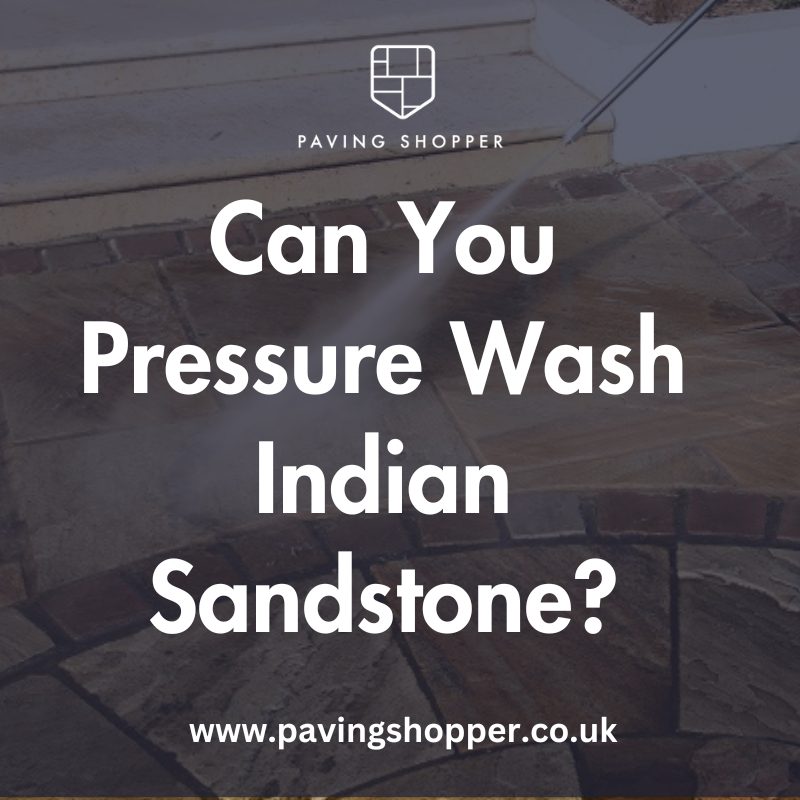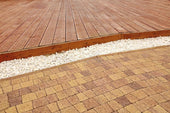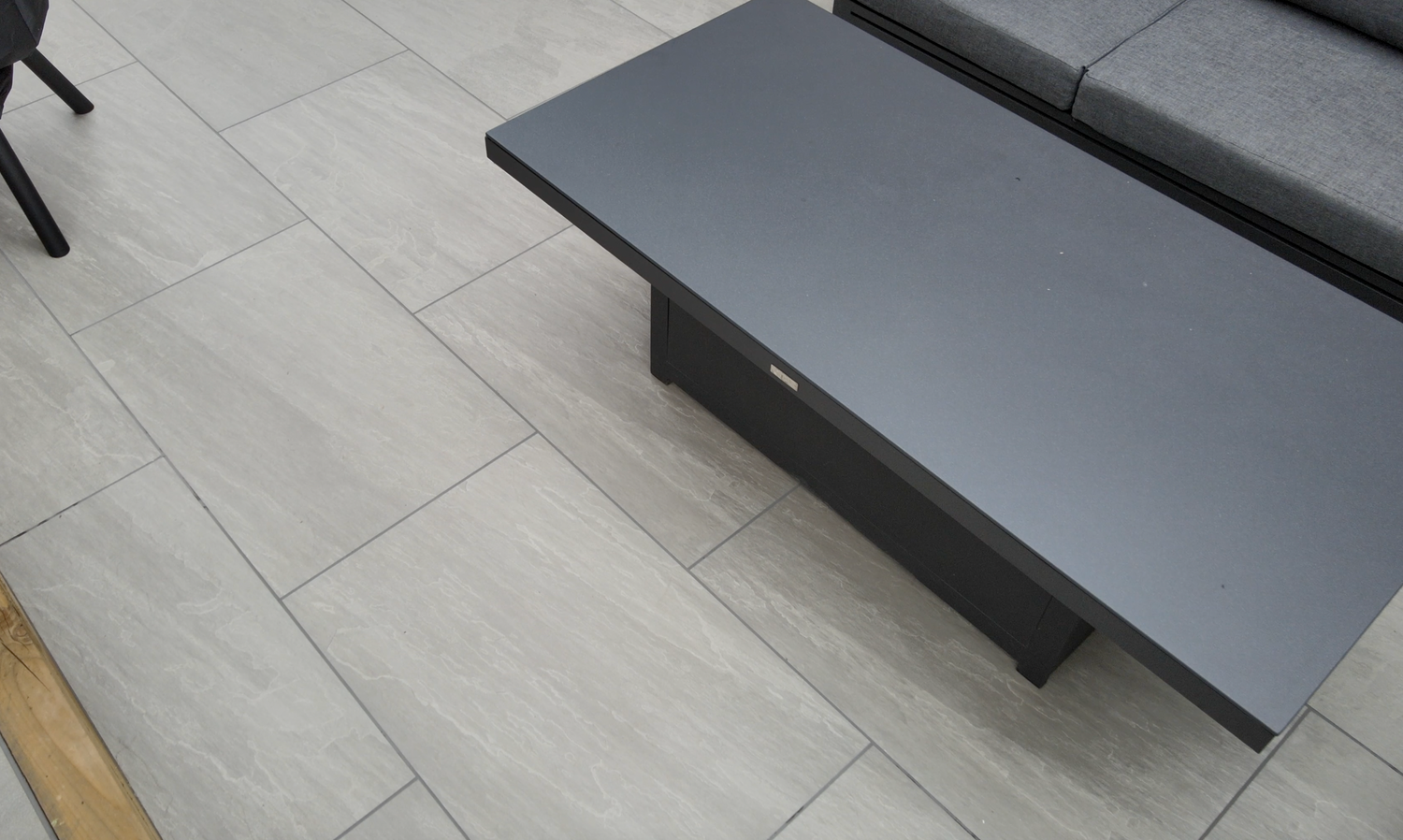
Can You Pressure Wash Indian Sandstone?
Share
Indian sandstone is a popular choice for outdoor paving due to its durability and attractive appearance. However, like any surface, it requires regular cleaning to maintain its beauty. One common question homeowners have is whether they can use a pressure washer to clean their Indian sandstone paving.
Indian sandstone can be pressure washed , but it is essential to take certain precautions to avoid damaging the surface. When pressure washing Indian sandstone, use a low-pressure setting and a wide spray nozzle to minimize the risk of etching or pitting the stone. It is also crucial to maintain a safe distance between the pressure washer nozzle and the sandstone surface.
How to Pressure Wash Indian Sandstone
- Begin by clearing the area of any furniture, potted plants, or other objects that may obstruct your cleaning process.
- Sweep the surface to remove loose debris, dirt, and leaves.
- Set your pressure washer to a low-pressure setting, ideally between 1200 to 1500 PSI, to prevent damage to the sandstone.
- Choose a wide spray nozzle, such as a 25-degree or 40-degree nozzle, to distribute the water pressure evenly across the surface.
- Maintain a distance of at least 12 inches between the pressure washer nozzle and the sandstone surface while cleaning.
- Work in a systematic pattern, starting from one end of the paved area and moving towards the other, to ensure you don't miss any spots.
- For stubborn stains or algae growth, use a mild detergent specifically designed for stone surfaces and apply it using a soft-bristled brush before pressure washing.
- Rinse the surface thoroughly with the pressure washer to remove any remaining dirt, debris, or detergent.
- Allow the Indian sandstone to air dry completely.
Tips for Maintaining Indian Sandstone
- Regularly sweep the surface to prevent the buildup of dirt and debris.
- Address spills and stains promptly to avoid permanent discoloration.
- Apply a sealer to protect the sandstone from stains and enhance its color.
- Re-seal the surface every 1-2 years, depending on the level of foot traffic and exposure to the elements.
- Avoid using harsh chemicals or abrasive cleaning tools that can damage the sandstone surface.
When using a pressure washer on Indian sandstone, it is crucial to maintain the proper angle and distance between the nozzle and the surface. Hold the pressure washer nozzle at a 45-degree angle to the sandstone surface, as this allows the water to effectively remove dirt and grime without causing damage. Maintain a consistent distance of 12 to 18 inches between the nozzle and the surface, depending on the pressure setting and nozzle type. Regularly check the distance and adjust as needed to ensure even cleaning and to avoid concentrating too much pressure on one spot, which may lead to etching or pitting of the sandstone. Move the pressure washer in a slow, steady motion, overlapping each pass slightly to ensure thorough coverage. If you encounter stubborn stains, you may need to make additional passes or use a mild detergent, but always exercise caution to prevent damage to the sandstone surface.
By following these guidelines and tips, you can safely pressure wash your Indian sandstone paving and keep it looking beautiful for years to come.
What are the best paving options for a dog-friendly garden?
When choosing paving for a dog-friendly garden, it's essential to consider factors such as slip resistance, durability, and ease of cleaning. Some excellent options include pet-friendly paving materials like textured sandstone or porcelain, which offer good grip and are easy to maintain.
How much does it cost to install a new patio?
The cost of installing a new patio depends on various factors, such as the size of the area, the chosen materials, and the complexity of the design. On average, you can expect to pay between £90 to £150 per square meter for a professional installation. For a more detailed breakdown of the costs involved, check out our guide on how much a new patio costs.
Can I lay paving slabs directly on soil or mud?
It is not recommended to lay paving slabs directly on soil or mud, as this can lead to an unstable and uneven surface that is prone to sinking and shifting over time. Instead, it's crucial to create a proper foundation using a sub-base material like crushed concrete or hardcore. Learn more about the importance of a suitable foundation in our article on laying paving on soil or mud.
What are the pros and cons of sandstone paving?
Sandstone paving is a popular choice for many homeowners due to its natural beauty, durability, and versatility. However, it does have some drawbacks to consider. For a comprehensive look at the advantages and disadvantages of this material, read our article on the pros and cons of sandstone paving.
How do I calculate the amount of paving I need for my outdoor space?
To determine the amount of paving you need, start by measuring the length and width of the area you want to pave. Multiply these values to calculate the total square footage or square meterage. Don't forget to account for any irregular shapes or curves in your design. For more tips on measuring and calculating your paving requirements, visit our paving calculator.
Related Posts
-

UK Garden Statistics and Trends 2024
UK Garden Statistics and Trends 2024 General UK Garden Statistics The vast majority of UK households have access to ...
-

Can I lay Paving on Soil or Mud?
Technically, yes – you can lay paving stones or slabs directly onto exposed topsoil however, laying a sub-base will e...
-

How Much Does a New Patio Cost?
A new patio in the UK typically costs between £80-£150 per square meter. For a 40-50 sqm patio, expect to pay £2,000-...
-

What Different Sizes Do Paving Slabs Come In?
When planning a patio or outdoor paving project, one of the key decisions is choosing the right size paving slabs. ...
-

Is Sandstone Paving Permeable? Is it porous?
Sandstone's porous nature enables it to absorb rainfall, qualifying it as a permeable paving variety. However, seali...
-

Where Does Natural Sandstone Paving Come From?
Sandstone begins deep underground, formed over eras as minerals and sediments fused under pressure. Powerful forces ...
-

5 Paving Ideas for Small Gardens: Maximise Your Outdoor Space
Front of House When considering paving ideas for the front of your house, it's crucial to select ones that complem...
-

9 Paving Ideas for Front of House: Enhancing Curb Appeal with Style
The facade of a house plays a pivotal role in defining its character and curb appeal, and the choice of paving can s...
-

9 Summer Garden Paving Ideas UK
Summer gardens offer a vibrant canvas for homeowners to express their style while enhancing outdoor living spaces. G...
-

8 Garden Paving Ideas for 2024
It's time to refresh your garden's look for 2024 and an easy way to do that is with some new paving. With so many opt...
-

How to remove moss from patio paving
Moss growth is a common issue for patio paving, especially in damp, shaded areas. While moss may seem harmless, it ca...
-

How much does sandstone paving cost?
When choosing new garden pavers, sandstone offers homeowners an enticing middle-ground - more durable than basic conc...
-

Why Do Paving Slabs Crack And How To Repair Them
Seeing cracks appear on your patio or driveway can be disheartening after investing time and money into installing be...
-

How to lay paving in winter (Tips & Tricks)
How Cold Temperatures Impact Paving Projects The primary concern when working in cold weather is ensuring proper curi...
-

Sub Bases For Patios
Building the Perfect Patio Base: A Comprehensive Guide When planning an outdoor living space, understanding proper ba...
-

Pros and Cons of Porcelain Paving
Are you considering adding porcelain paving to your outdoor space? It's important to weigh the pros and cons before ...
-

Understanding Paving Slip Ratings: A Comprehensive Guide
A paving slip rating, also known as a slip resistance or anti-slip rating, is a measure of how slippery a surface...
-

Stunning Garden Water Feature Ideas - Enhance Your Outdoor Space
Garden water features are decorative elements that incorporate water into a garden, adding beauty and a sense of ...
-

How to Stop Weeds in Block Paving: Expert Tips andTricks
Weeds growing between the blocks of your paving can be an unsightly and frustrating problem. Not only do they make y...
-

How to clean paving without a pressure washer
A patio cleaner is a cleaning solution designed specifically for removing dirt, grime, and stains from outdoor patio...
-

How to Grout Paving Slabs – Expert Tips and Techniques
Pointing paving slabs is an important step in the process of installing them. Grout is a mixture of cement, water...
-

Block Paving Guide | What Does it Cost? | How Much Per m2?
Block paving is a versatile and durable option for creating driveways, patios, and paths. This method involves using...
-

Porcelain VS Ceramic Paving
Porcelain paving is non-porous and more durable than ceramic paving, which is more porous and prone to stains and wea...
-

Sandstone V Porcelain Paving - (Style Comparison and Distinctions)
When choosing materials for your patio or driveway, two of the most popular options are sandstone paving slabs and p...
-

Understanding Gradients and Falls for Paving and Drainage (2024)
When it comes to paving and drainage projects, understanding the correct gradients and falls is essential for ensuri...
-

Indian Sandstone Paving Colours for A Patio - A Comprehensive Guide
Indian sandstone is one of the most popular paving materials, celebrated for its natural beauty and the variety of co...
-

Jointing and Pointing For Paving (Sand & Cement Mix)
Patio pointing is important for both looks and durability. It protects the layers under your paving, stops weeds, and...
-

How to Lay Paving on Sand and Cement: Expert Advice and Tips
Paving on Sand and Cement: A Comprehensive Guide When it comes to enhancing your outdoor space, paving is a popular ...
-

Pros and Cons of Sandstone Paving
Pros & Cons of Indian Sandstone Paving Indian sandstone paving is a natural and durable option that adds both bea...
-
Does Patio Paving Need Edging? A Comprehensive Guide
In this article, we'll explore the importance of patio edging, the different types of edging materials available, and...
-

Pet Friendly Paving - What is the best paving for a dog-friendly garden?
Creating a dog-friendly garden requires choosing the right paving materials to ensure your furry friends can enjoy t...
-

Patio Paving Laying Patterns Guide
Paving patterns can transform an ordinary outdoor space into a stunning and eye-catching area that complements your ...
-

Patio Kits vs Single Size Paving Slabs: Which To Choose?
When designing a patio or outdoor space, one crucial decision is whether to use a patio kit (also known as patio pack...
-

Are paving slabs suitable for driveways?
This is a question many homeowners ask when it comes to choosing the right type of driveway surface for their home. T...
-

How much paving do you need to cover your outdoor space?
Planning an outdoor paving project is exciting, but it’s crucial to accurately estimate the amount of paving needed b...
-

What is the Best Paving for Patios?
When it comes to choosing the best paving for patios, there are a variety of factors to consider, such as durability,...
-

Sandstone v Limestone v Porcelain: The Pros and Cons of Different Garden Paving Materials
Transforming your outdoor space involves choosing the right paving material, and porcelain and sandstone are two of t...
-

Are Paving Slabs Cheaper Than Decking?
Transforming your backyard into the ultimate outdoor oasis can be challenging when choosing between paving slabs or d...
-

How to lay a patio - An expert guide to laying paving slabs and patterns
There are a few things to consider before laying a patio, such as the type of paving stones and the laying pattern. Y...
-

How to cut Sandstone Paving?
When it comes to prepping your garden for a new patio, you may consider different designs that require your paving to...












































